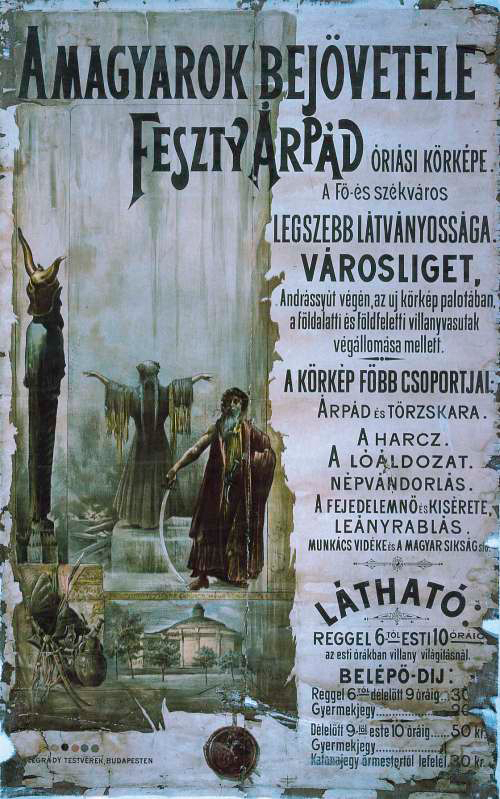
Árpád Feszty’s gigantic cyclorama, originally titled the Arrival of the Hungarians, depicting the Hungarian conquest of the Carpathian Basin, was advertised in City Park as the most beautiful spectacle of the capital.
A cyclorama, or circular panoramic painting is a unique genre of art, which places the spectator in the middle of a circular painting.
Feszty was highly inspired by a cyclorama he had seen in Paris in 1890 and decided to paint one himself.
Originally he planned to depict the deluge of the Bible, but on the advice of his father in law, Mór Jókai, he changed it to the Hungarian conquest. This latter topic was even more prospective, as during these times, Hungary was preparing to celebrate the millennial of the founding of the Hungarian state, so the project received appropriate support.
The capital for instance provided space for the circular gallery housing the painting, which was designed and built in a very short time by Feszty’s older brother, who was an architect.
In order to create an authentic work of art, Feszty carried out extensive research. He even travelled to the Verecke Pass with 3 of his painter colleagues (Ignác Ujvári, Béla Spányi, László Mednyánszky), to create a sketch of the local landscape, which was projected onto a canvas 120 meters long and 14.5 meters wide.
Feszty had two years to complete the painting. It took two months just to paint the background, which is merely sky and clouds. More than 20 artists worked on the painting on scaffolding several stories high, which was rolled around the canvass on railway tracks.
Another interesting fact is that 1000 kg of paint was used for the work of art.
The finished art was introduced to the public on May 13 1894, and the media praised it as a huge success. The six main scenes of the painting are as follows: the chieftains, the cavalry charge, the sacrifice of the white horse, the leader of the camp, the rape of women, and the magnificent arrival of families.
The Panorama returned to Budapest in 1909 after the World Fair in London. During World War II the painting suffered serious damage during the bombing of the capital, and was eventually moved to the National Gallery. Conservation of the painting commenced in 1975, and it was restored by Polish artists between 1991 and 1995. The Panorama has been on show at the Ópusztaszer Heritage Park since 1995.











